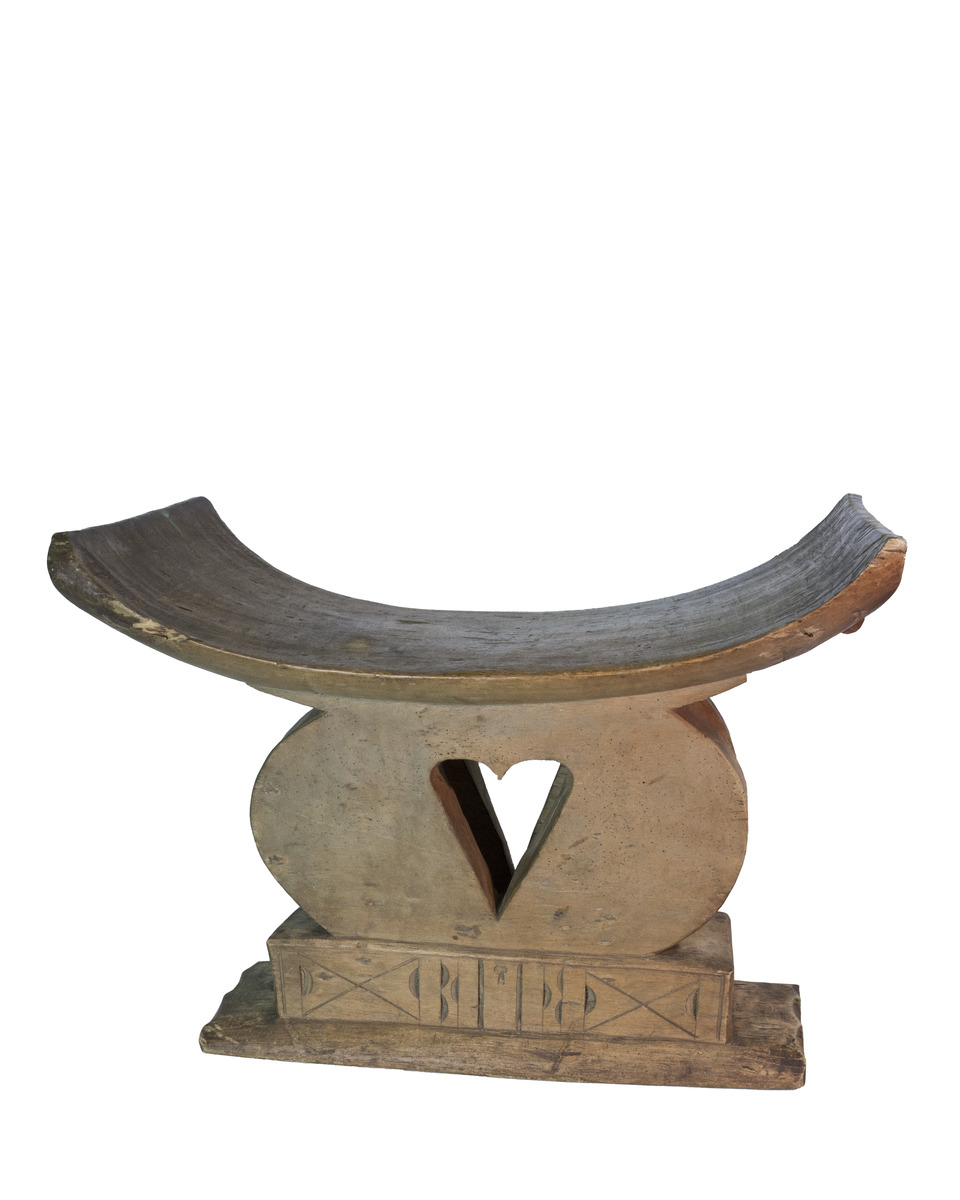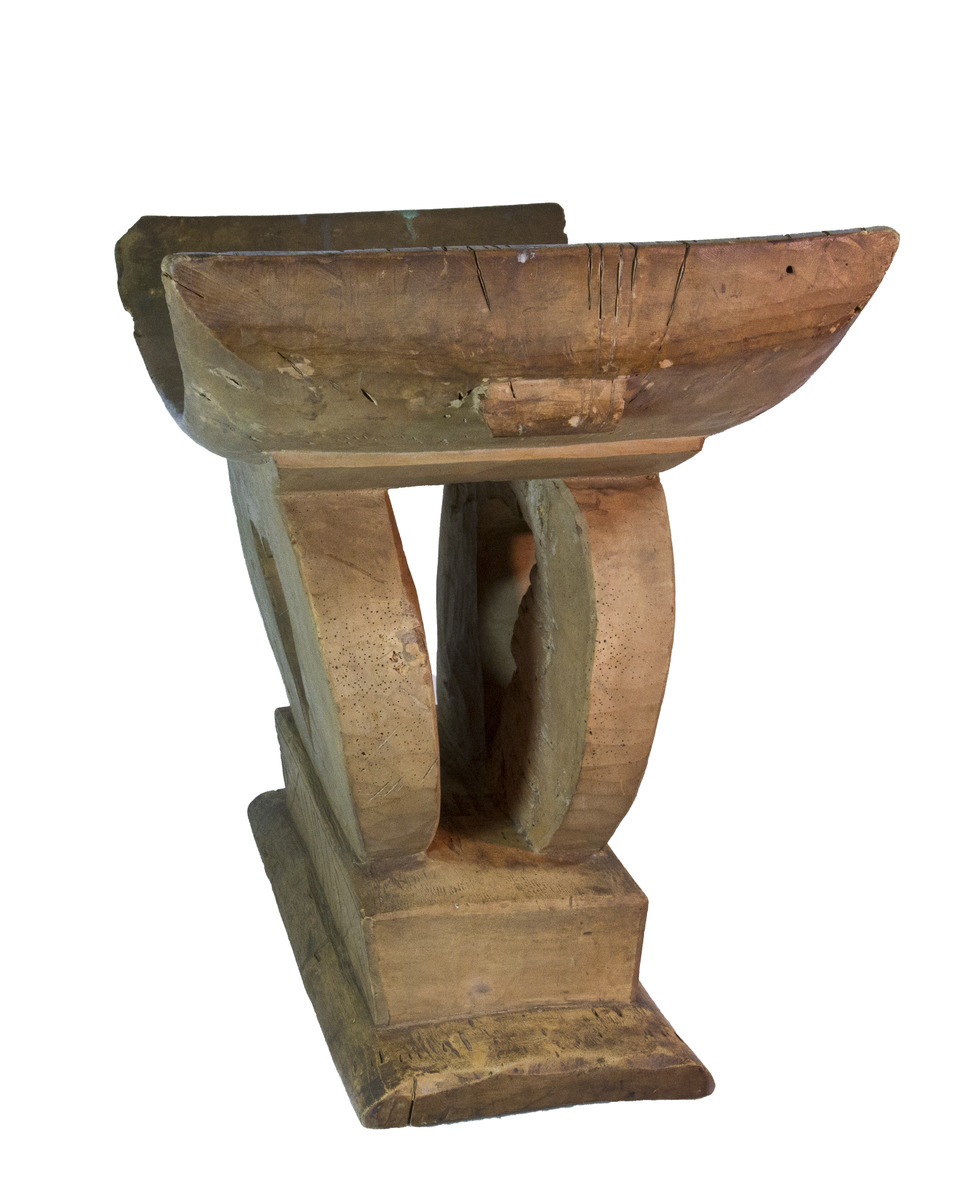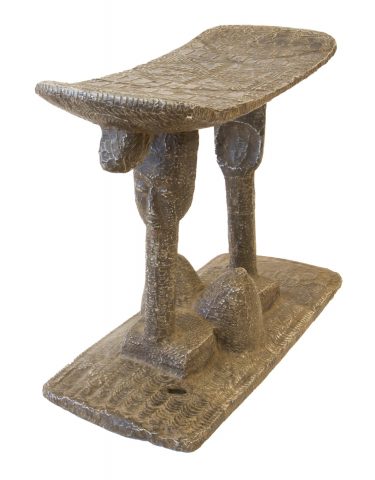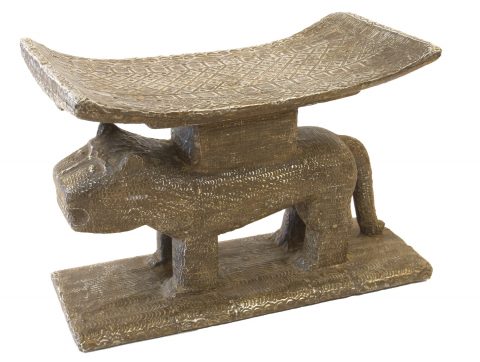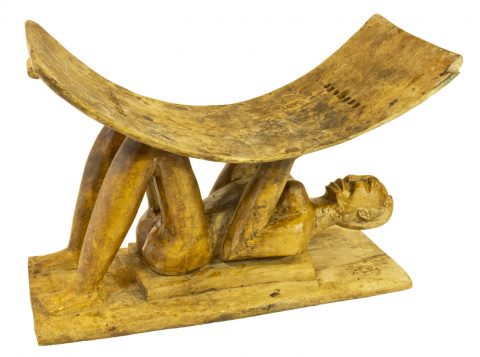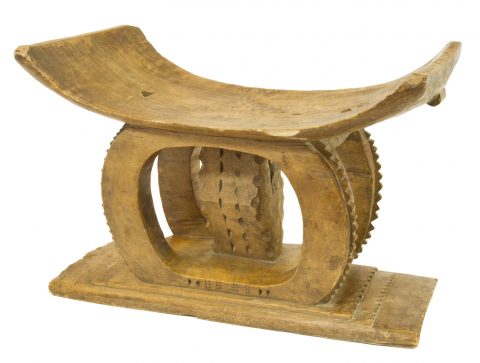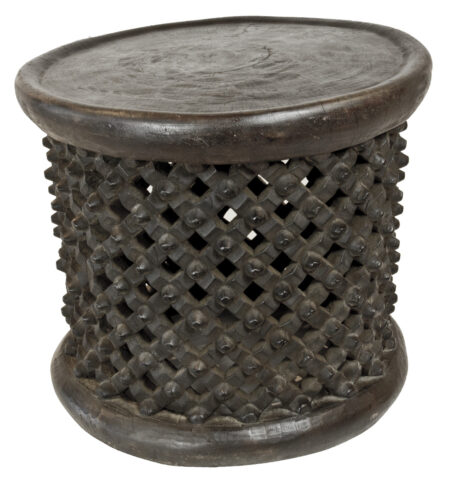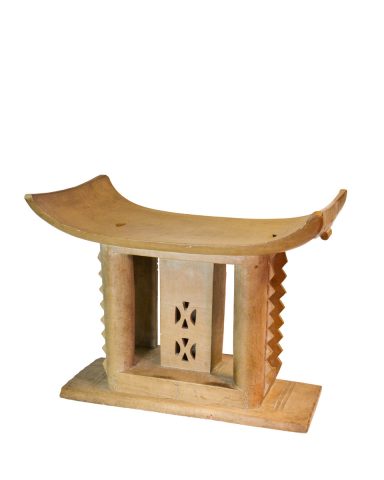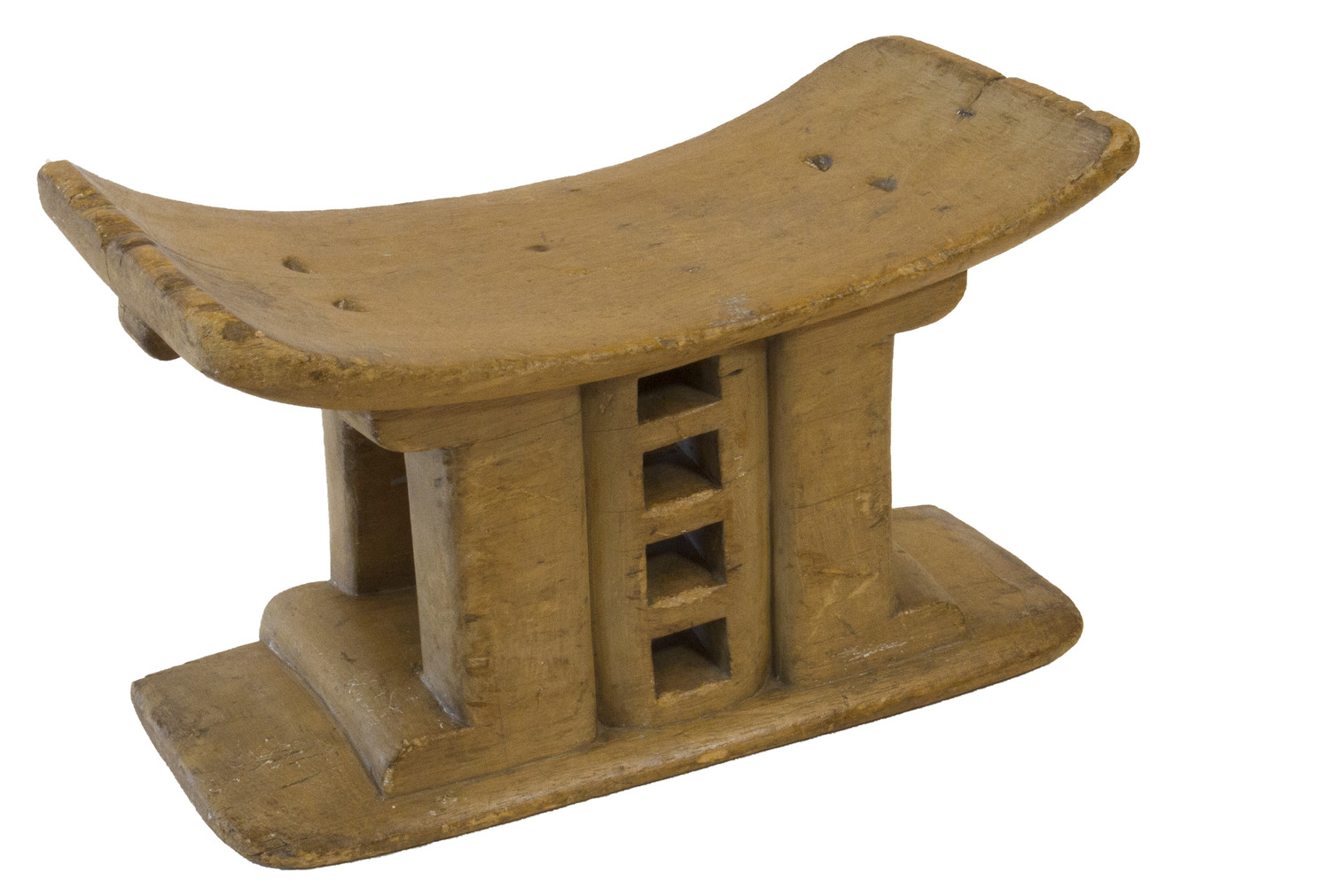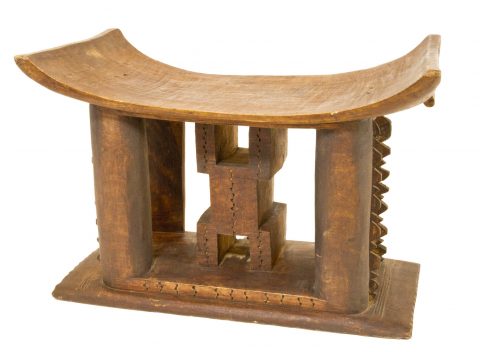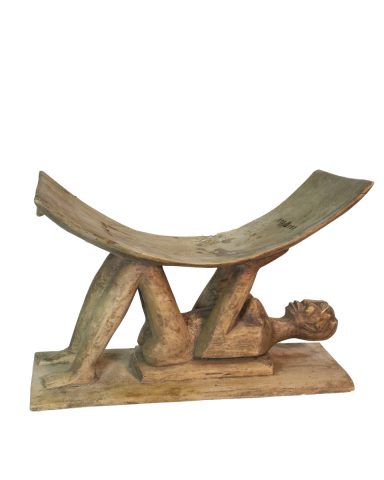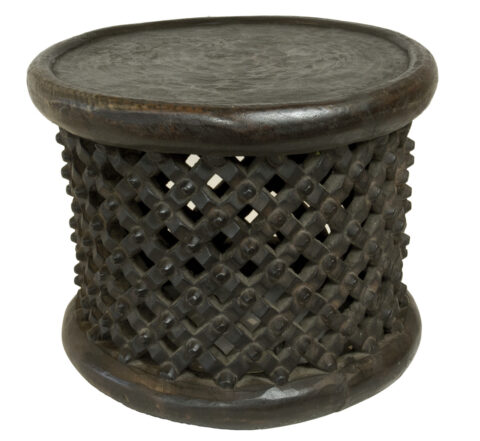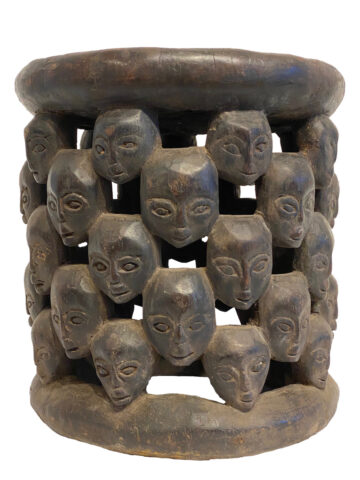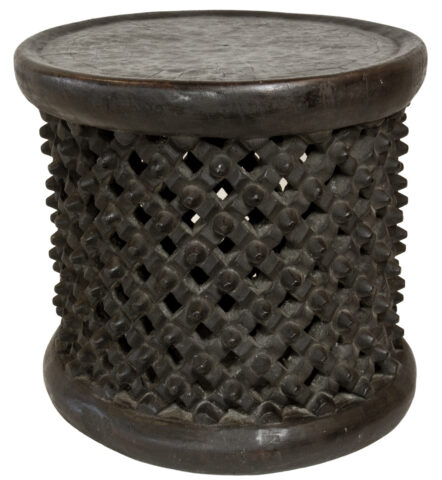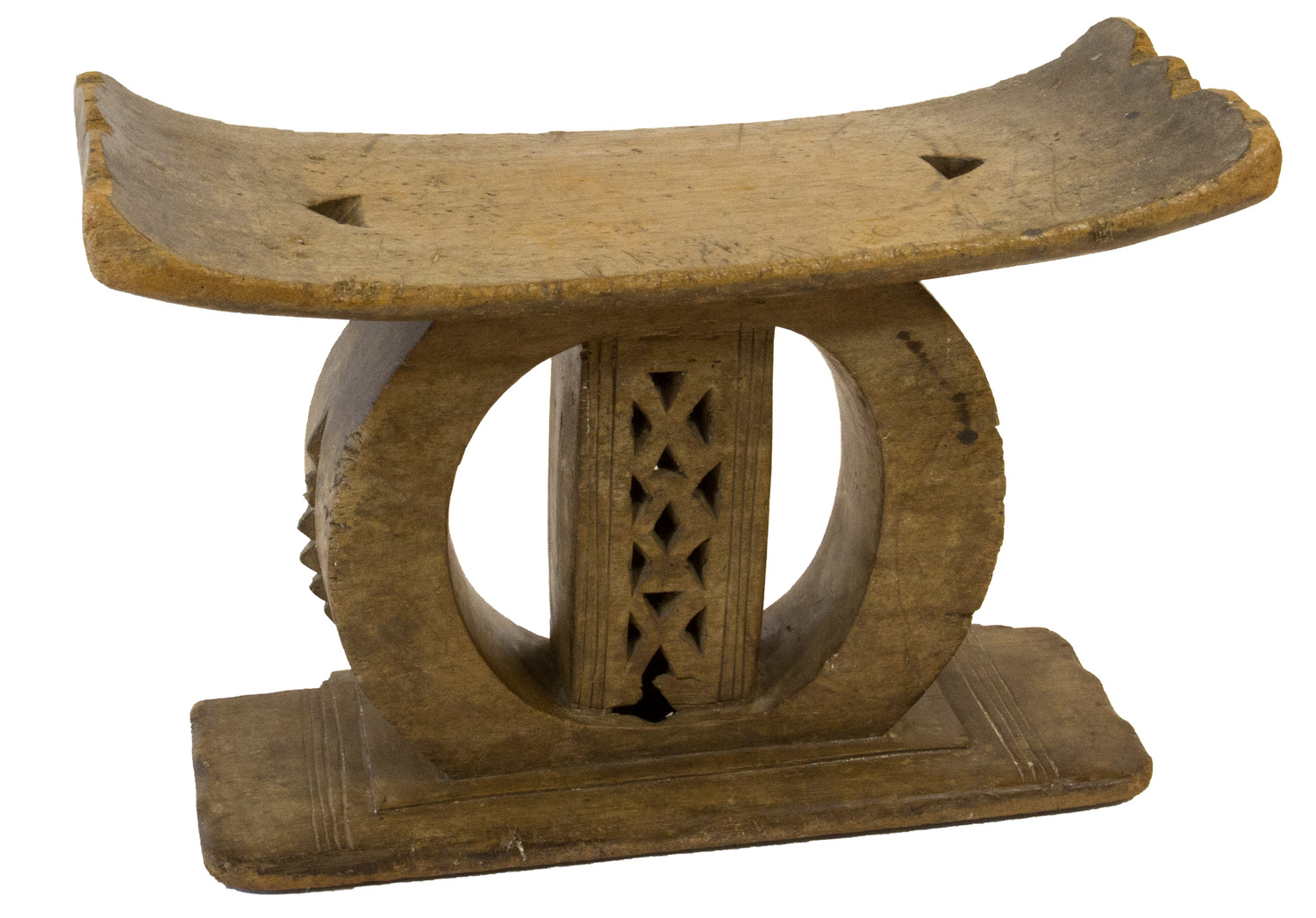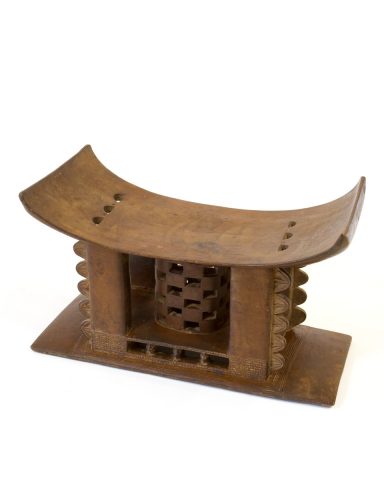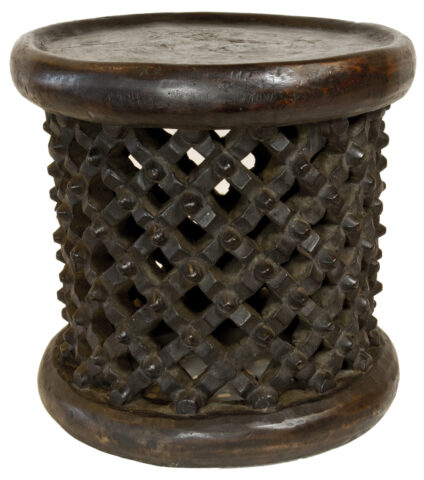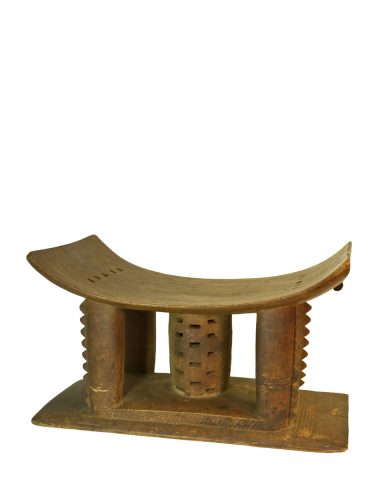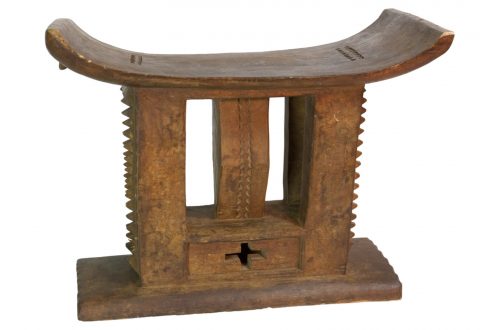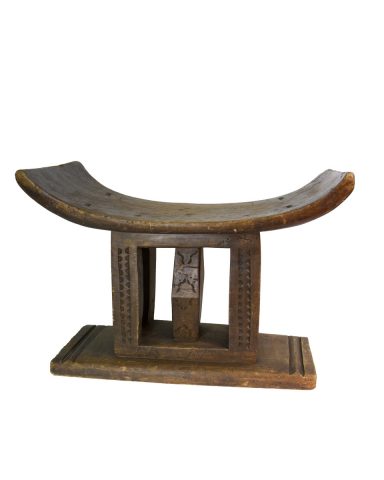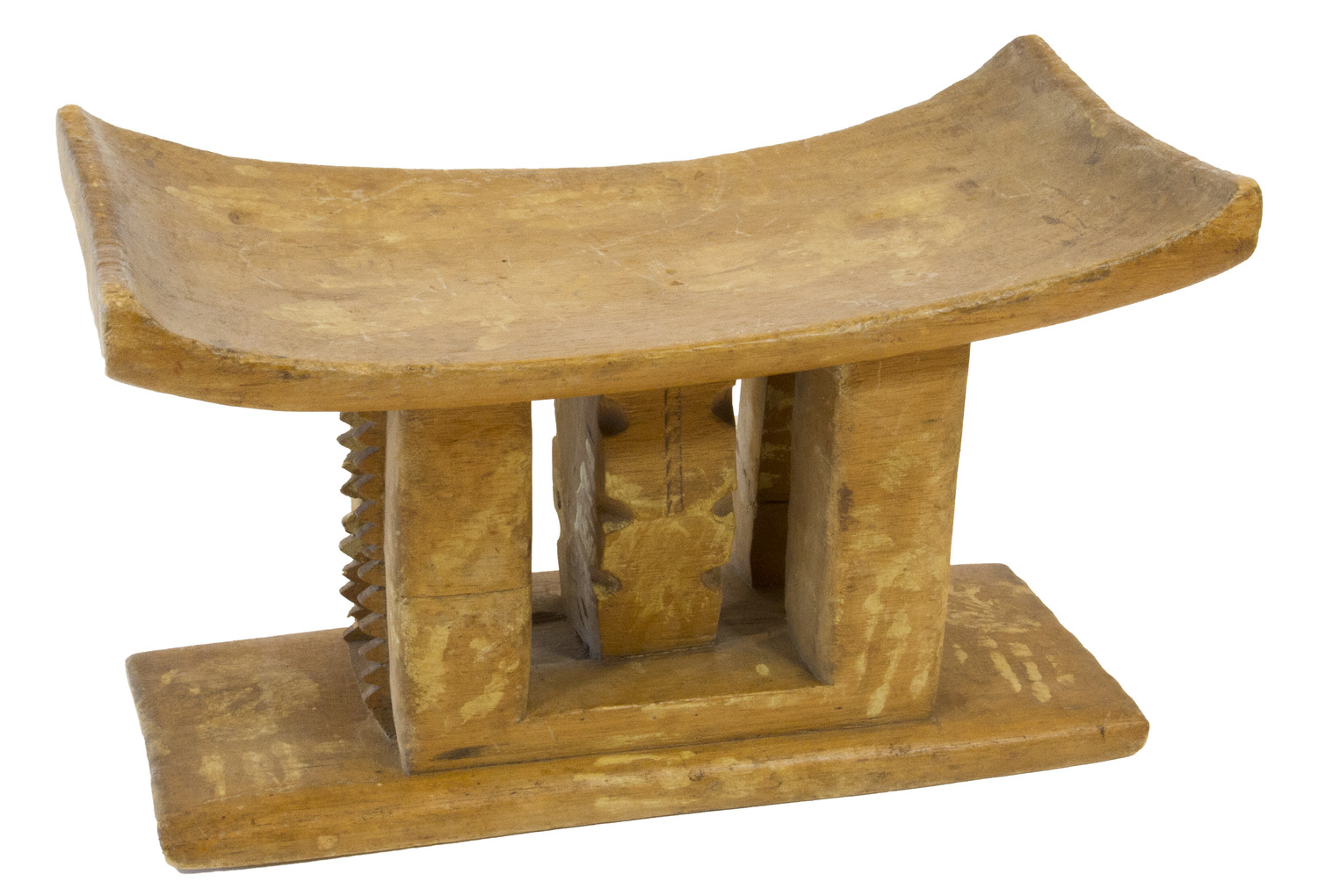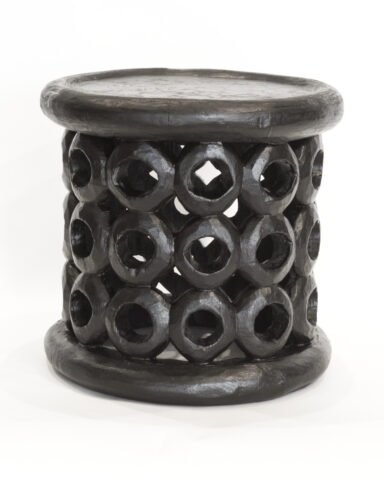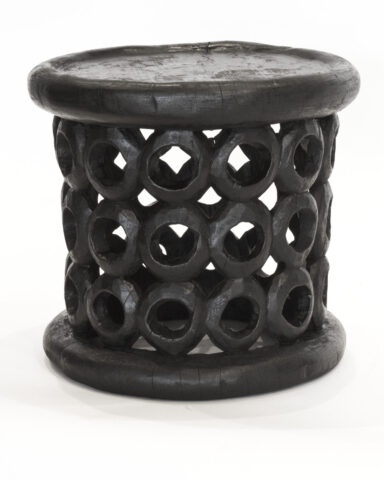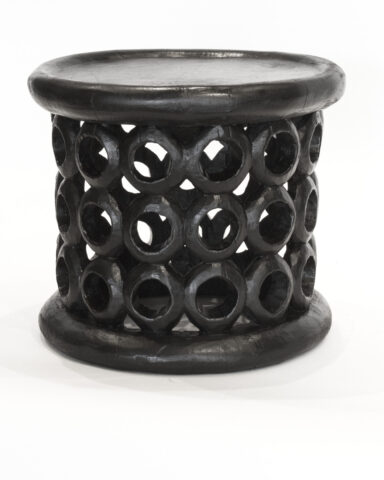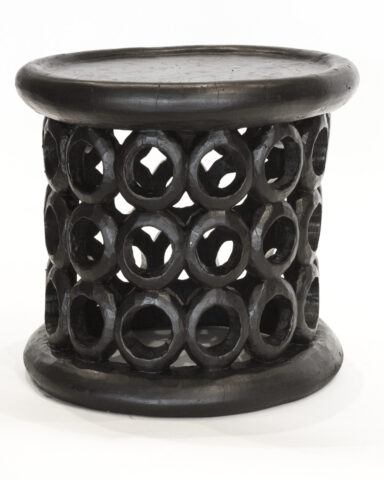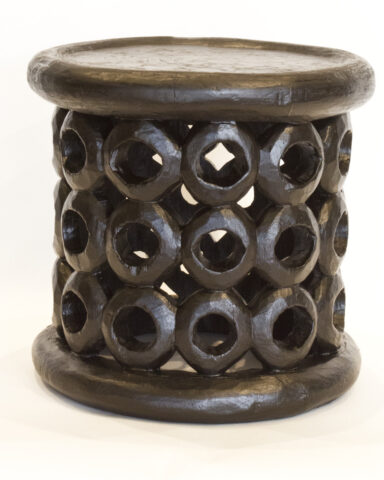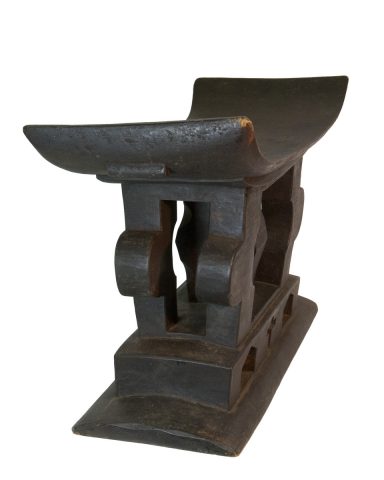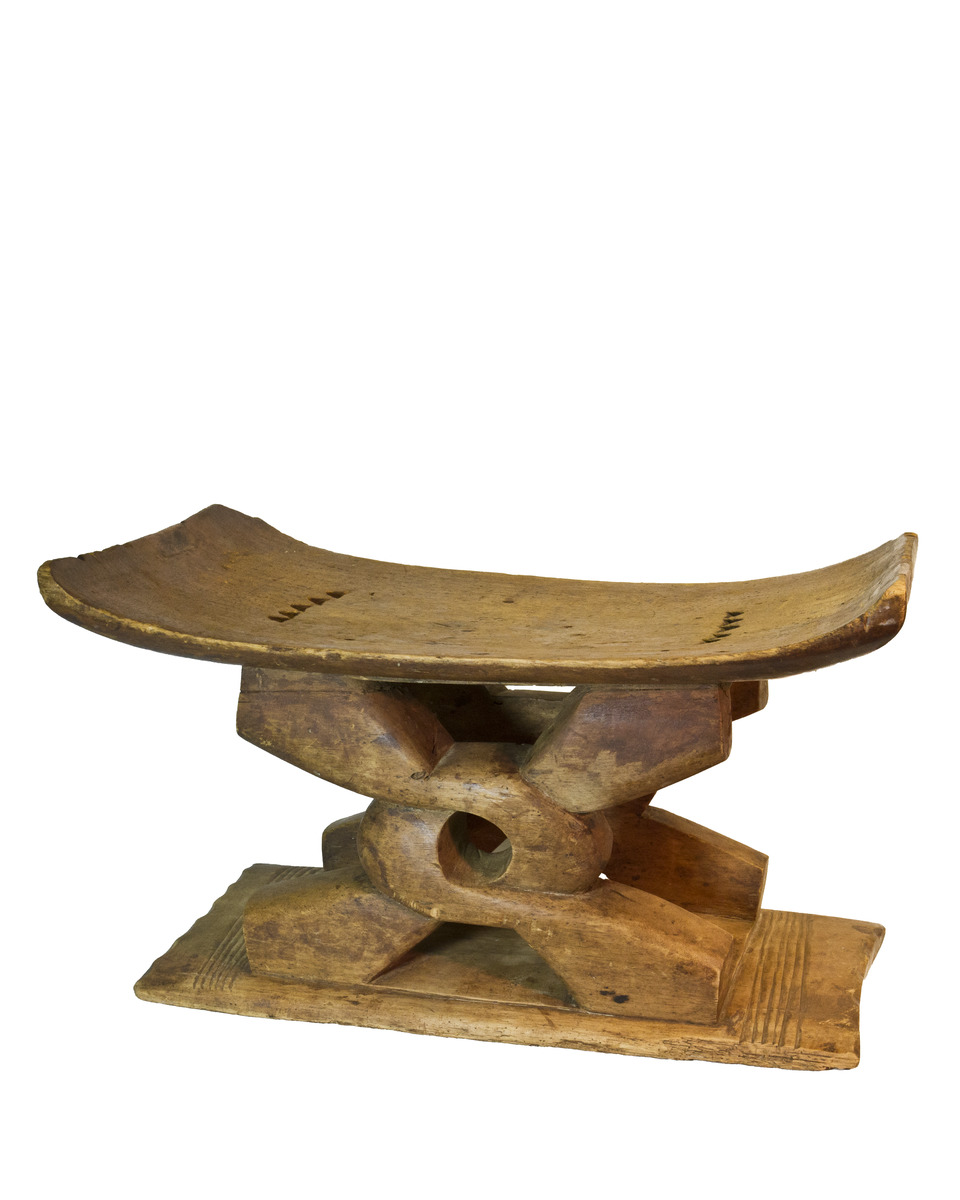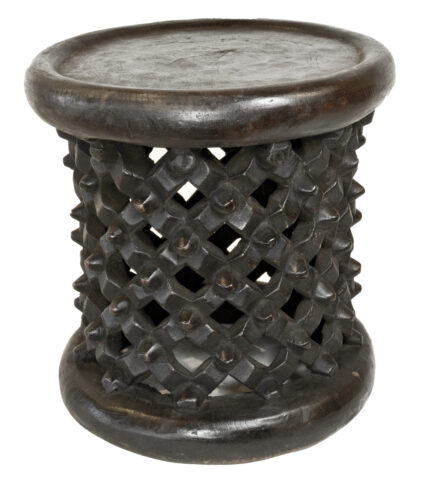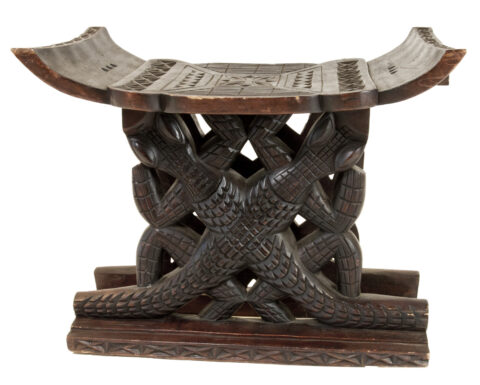Description
The Ashanti People of West Africa originated from the Empire by the same name and presently inhabit the southern region of the Republic of Ghana. These unique stools are hand carved from a single, hardwood block of the “sese” or “tweneboa” tree. Within Ashanti culture, this stool is perceived as a universal icon of power, achievement, and authority. It is also a vehicle for memory of the bearer’s cultural lineage (“Kingdom of Ashante” 2017). By cultural tradition, the trees chosen for carving are rendered praise through special ceremonies – to bless the wood and offer reverence for nature’s sacrifice. The seat of an Ashanti stool curves upward on either side, both to physically embrace its user and symbolically furnish refuge for the soul. Carved etchings and motifs representing achievements of its owner adorn the surface and edges of the stools. Occasionally, tree rings are clearly visible on the surface of the object, contributing to its physical beauty.
REFERENCES:
“African Ceremonial Stools and Chairs.” https://africa.si.edu/exhibits/legrain/Afstools.htm
“Kingdom of Ashante” BBC Motion Gallery: 2017


